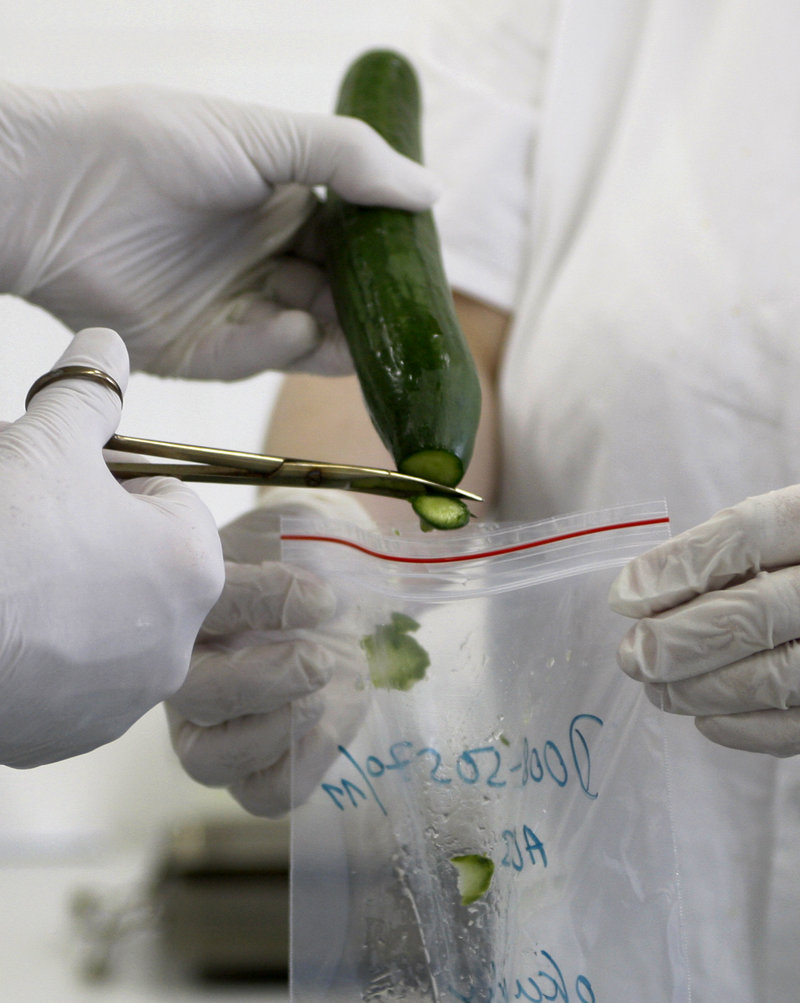BERLIN – European health officials tracking one of the worst E. coli outbreaks on record might never know where it came from. It’s a sad fact of life in food poisoning cases: There often is no smoking gun.
The germ has sickened more than 1,500 people, mostly in Germany. Most patients who have been interviewed said they ate lettuce, tomatoes or cucumbers, but officials testing produce across the continent have yet to find any vegetables with the particular strain involved.
Illnesses can occur days after tainted food is eaten and leftovers thrown out, so “the trail gets cold pretty quick,” said Bill Marler, a Seattle attorney who specializes in food poisoning cases.
“They might never find the cause of the outbreak,” said Paul Hunter, professor of health protection at England’s University of East Anglia. “In most food-borne outbreaks, we don’t know definitively where the contaminated food came from.”
Germany’s national health agency said Wednesday that more than 1,530 people there had been sickened by a dangerous E. coli germ, including 17 dead and 470 suffering from a kidney failure complication that was previously considered rare.
The outbreak has hit at least nine European countries, but virtually all the sick people live in Germany or recently traveled there. Two people who were sickened are now in the U.S., and both had recently traveled to Hamburg, Germany, where many of the infections occurred.
The outbreak is already considered the third-largest involving E. coli in recent world history, and it may be the deadliest. Twelve people died in a 1996 Japanese outbreak that reportedly sickened more than 12,000, and seven died in a 2000 Canadian outbreak that also made thousands ill.
Nearly all cases are linked to northern Germany, “so it seems to be a common exposure there. But we don’t yet know what was this exposure,” said Dr. Hilde Kruse, the World Health Organization’s food safety program manager for Europe.
Where the dangerous germ came from is just one of the questions health officials have. Another is why patients are suffering from life-threatening kidney complications in an unusually high percentage of cases. It might mean the strain is particularly virulent, but it’s also possible that thousands of less serious cases of food poisoning have gone unreported.
People with less severe symptoms may contact health authorities later, or not at all, Kruse said.
Kruse also said the outbreak is “different in that it mainly affects adults and predominantly women.”
Some experts attribute that to the fact that women tend to eat more fresh produce.
Send questions/comments to the editors.



Success. Please wait for the page to reload. If the page does not reload within 5 seconds, please refresh the page.
Enter your email and password to access comments.
Hi, to comment on stories you must . This profile is in addition to your subscription and website login.
Already have a commenting profile? .
Invalid username/password.
Please check your email to confirm and complete your registration.
Only subscribers are eligible to post comments. Please subscribe or login first for digital access. Here’s why.
Use the form below to reset your password. When you've submitted your account email, we will send an email with a reset code.